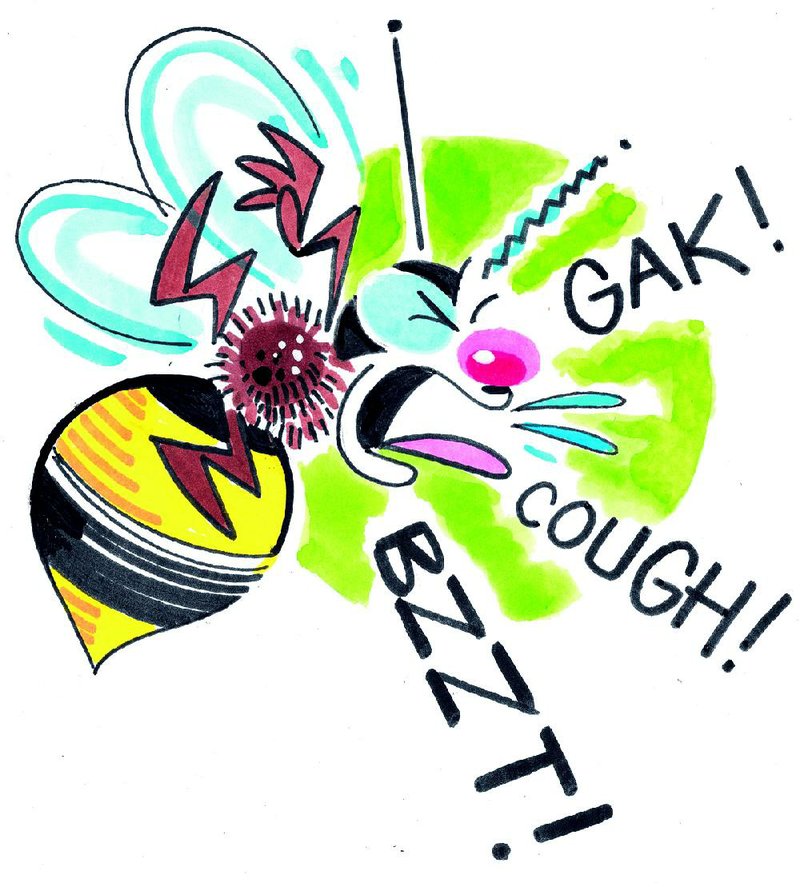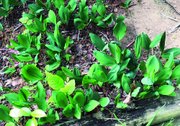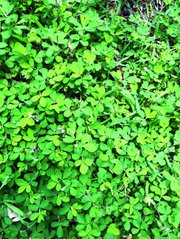Q Pursuant to your recent column regarding euonymus scale: I have made yearly applications of the Bayer Advanced for several years now, with excellent results. My concern is its effect on bees. I had a fat bumblebee hovering while I was applying this year, and I kept shooing it away until the solution had soaked into the ground. However, I read recently that imidicloprid will kill bees if they feed on the flowers of plants that have been treated systemically. I love my euonymus, but I don't want to be killing bees. Is there an effective alternative?
A There continues to be heated debate over the use of imidicloprid systemic insecticide and bee health. If used properly, and applied at the correct rates, research has shown little to no damage to bees. I am assuming you are growing the golden euonymus shrub, which is grown primarily for its yellow and green foliage. If planted in the shade, it will not bloom. In full sun, inconspicuous flowers do appear in the spring. If your plant blooms, you could wait to apply the insecticide after bloom.
Q I love zinnias and normally have good luck with them. This year something is eating them. When the plant gets about 2 inches tall the leaves are attacked, and eventually it's destroyed. I keep planting new ones, and it keeps happening. I'm getting frustrated as my number of healthy plants is dwindling to an all-time low. What can I do?
A I believe you have an animal issue. I have heard reports of squirrels and raccoons attacking zinnias this year. Maybe there is a new fad "zinnia diet" trend going on in the animal world! Try to use a temporary exclusion device. Make a small cage with chicken wire or other type of wire and cover the plants. Let them get up and growing. There are many home remedies for animal control, from hot pepper to scare devices, but you have to use a variety of approaches. If something was foolproof, everyone would be doing it.
Q We are trying to identify this plant that keeps returning each spring at my niece's house in Mountain Home. Is it a weed or a plant we want? It has never done anything but have green foliage.
A The plant is called lily of the valley. The rhizomatous roots are called pips. It is one of a few bulb-type plants that bloom in the shade. It can be used as a groundcover in a shady garden. But they struggle in hot, dry climates. The plants should be kept evenly moist. They like a rich site. They bloom with fragrant little bell-shaped blooms in the spring. The plant is poisonous, so deer leave them alone.
Q This clover-like weed it taking over my lawn. What is it and how do I get rid of it? I am new at this lawn stuff.
A The weed you have is lespedeza. It tends to be more of a problem in weak lawns with low fertility, and it is very drought tolerant. Have your soil tested, and consider fertilizing based on the results. If you choose to try to kill it, the plant killer 2, 4-D alone will not control lespedeza. Ortho Chickweed and Oxalis Killer (8 percent triclopyr) is a good choice for homeowners, but read the label directions as to temperatures for application. Do not use this product on centipede, St. Augustine or bermuda grass lawns.
Q My oak leaf hydrangea is producing beautiful flowers. But they're so heavy that the branches can't support them. Should I prune now and say goodbye to the flowers? I'm concerned that the branches are going to split.
A I would not forgo any blooms in the garden. Consider adding a few stakes unobtrusively around the plant and tie up some of the limbs for extra support. Once the flowers fade, do some corrective pruning. Oakleaf hydrangeas produce canes at the base of the plant -- there is not one main trunk but a selection of small "trunks" called canes. If you only top-prune these canes, they will branch out and produce multiple blooms per cane, causing them to be top heavy. After bloom, take out a third of the oldest, woodiest canes at the soil line. This should encourage new canes, which will be more upright. Then thin out some of the extra branches on some of the remaining canes to make them more stable.
Janet B. Carson is a horticulture specialist for the University of Arkansas Cooperative Extension Service. Write to her at 2301 S. University Ave., Little Rock, Ark. 72204 or email her at
HomeStyle on 05/26/2018



